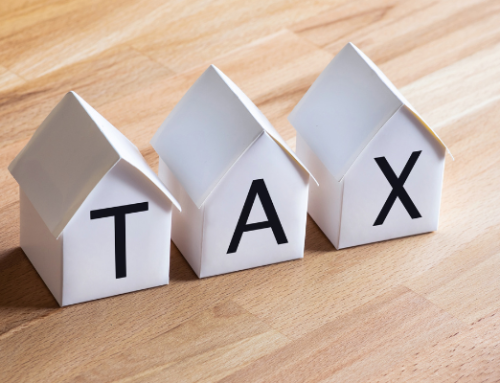Even with a national infrastructure bill on the horizon, the construction and real estate industries may be slow to respond to an expected turnaround later this year. COVID-19 and other factors are influencing both industries’ ability to bounce back. How long will this last, and what can contractors do in the meantime?
Factors Affecting Economic Recovery
COVID-19: the pandemic we’ve become accustomed to talking about for the past year, is largely to blame for the myriad issues facing construction and real estate. In one way or another, COVID is impacting industries from different angles. In construction and real estate, the pandemic is influencing two primary factors: steep cost increases in raw materials and supply chain disruptions.
Material Prices
Compared to a year ago, the prices for raw materials like steel and lumber have skyrocketed. Both have experienced at least a 20 percent increase just in the last several weeks. Year over year, the cost of iron and steel products are up 50 percent. Soft lumber prices soared by more than 70 percent over the last 12 months. Contractors know that these increases translate to several thousand dollars – or hundreds of thousands of dollars – more for the same project.
There is a ripple effect, too. Other materials cost more: everything from drywall to vinyl siding to appliances. Diesel fuel is also more expensive, making it more expensive to transport materials.
Ken Simonson, Association for General Contractors Chief Economist, said that material cost increases tell only part of the story. “They are based on prices the government collected a month ago, and they fail to capture the notices contractors are receiving daily about longer lead times, shipments held to a fraction of previous orders, and other challenges.”
Ongoing steel and aluminum tariffs that are still in place continue to compound high material costs.
Supply Chain Disruptions
COVID’s impact on the supply chain began last year. Factories and ports closed, and employees were laid off or furloughed. Since then, some suppliers still aren’t operating at full capacity. Lack of available workers on ships and at docks means an additional delay loading and unloading goods.
And there are non-pandemic factors, too. Extreme weather events like wildfires and hurricanes continue to interrupt delivery routes. Months of back-and-forth international tariffs have also impacted global trade substantially.
Labor Shortage
On top of these issues, a mounting labor shortage threatens to undermine the industry’s ability to respond to more projects. Construction may need to hire anywhere between 750,000 and 1 million workers to meet rising demand in 2021. The problems are that skilled workers are harder to find and more expensive. Historical data is not promising, either. More than 60 percent of construction workers who lost their jobs in the Recession between 2007-09 never returned to the industry.
How to Protect Your Business
It’s a safe bet to plan for substantial delays and price increases for the foreseeable future. Plan for longer lead times. The same advice we had early in the pandemic stays true today: diversify the supply chain. Have more than one vendor for key materials. In some cases, it’s also worth it to experiment with different materials. If steel or concrete is too expensive, perhaps a composite material could be suitable.
There are other steps to take to protect your real estate or construction business. Consider:
- Negotiating a contract that shares risk.
- Clearly stipulate what constitutes a substantial price increase.
- Include permitted and prohibited uses of the contingency clause.
- Incorporating different pricing strategies.
- From fixed fee, cost-plus, value-priced, and aggregate not-to-exceed, pricing doesn’t have to be one-size-fits-all.
- Shortening the project schedule to save on labor costs.
- Take care to avoid overworking employees. Don’t cut corners on quality.
- Reducing bid times.
- Preserve current pricing to within 30 days or so.
- Communicating with owners and other key stakeholders along the way.
- Leverage the value of relationships and mutually beneficial outcomes.
Finally, remember that if different materials are experimented on before using them in an actual project, the costs may qualify for the Research and Development tax credit.
Is This Market Sustainable?
The Associated Builders and Contractor’s Construction Confidence Index indicates an industry still grappling with a somewhat unexpected resurgence. Backlog is down slightly, but the rest of the Index was up in March, indicating overall contractor optimism for the next six months.
Residential housing is still very much a seller’s market. It’s still common in most areas for homes to sell at or above asking price within hours of hitting the market. If interest rates remain low, expect that side of the market to remain strong at least through the end of the year.
On the commercial and industrial side, the $2.3 trillion infrastructure bill stands likely to bring more projects to bid before the fourth quarter begins. However, tricky issues remain. There are still shortages of workers and supplies, and raw material pricing doesn’t look to go down anytime soon. Contractors could get squeezed on already tight profit margins and some may simply wait to build until the market is better.
Many experts believe these issues are temporary and will work themselves out, but perhaps not until early 2022.
Though there is plenty to be optimistic about, proceed with caution, at least for now. Engage in upfront and proactive planning regarding contracts, timelines, pricing, and the supply chain. Stay in regular contact with stakeholders. Take advantage of tax credits and incentives where possible. And stay in touch with advisors to help navigate the challenging and ever-changing landscape.





